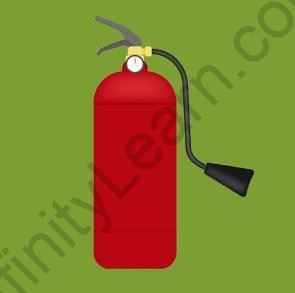Table of Contents
Table of Contents
- Methods to Control Fire
- Water
- Compressed Carbon dioxide
- Summary
- What’s Next?
In the previous segment, we learnt about Combustion. In this segment, we will learn how fires can be controlled.
What methods can be used to control fire?
Combustion is a good phenomenon as it liberates energy in the form of heat and light. But too many flames or even combustion of the substance on a large scale is very dangerous as fire can spread rapidly and can get everything burnt in itself. Hence, the fire needs to be controlled.
Let us look at some methods to control fire.
The three basic requirements for combustion are ignition temperature, fuel, and oxygen. Cutting off the supply of any one of these can lead to the termination of combustion.
Water
When a spray of water is thrown on the flames, the temperature is lowered. As a result, the combustible substance no longer burns.
Compressed carbon dioxide
All combustions cannot be controlled with water. For example, if an electrical gadget or petroleum or any kind of oil catches fire, we cannot spray water in these flames.
To put out such fires, fire extinguishers are used. These cylinders contain compressed carbon dioxide. Spraying the compressed gas douses the flames.




